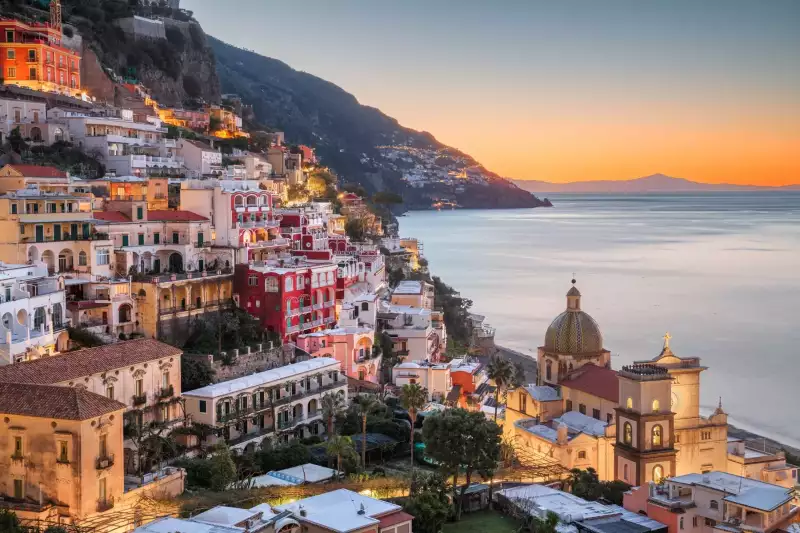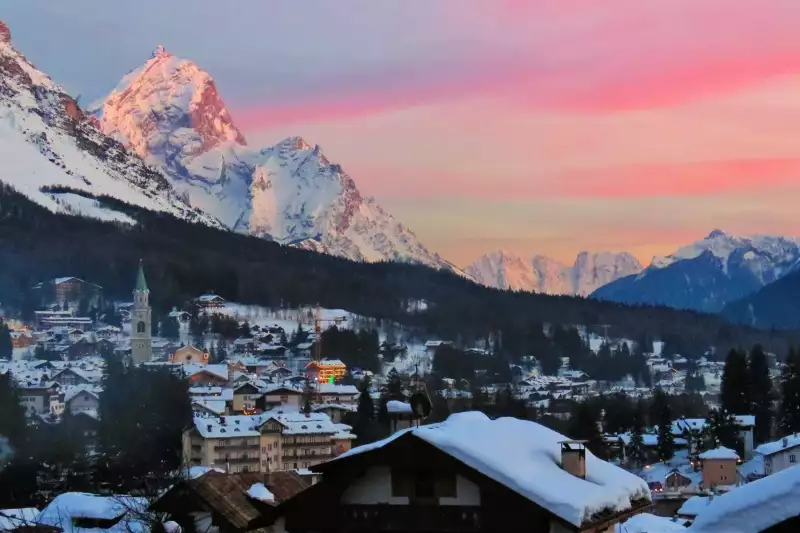Italy's allure as a tourist destination is evident, boasting majestic mountains, picturesque landscapes, golden beaches, Mediterranean cuisine, world-famous cultural treasures, and historic architecture. In 2022, the country hosted an impressive 50 million tourists, securing its position as the fourth most popular global destination, the second most popular among Europeans, and the premier choice for food and gastronomy enthusiasts. What’s more, tourism is critical to the Italian economy.

1 in 9 jobs are directly or indirectly related to tourism, and the sector contributed over 10% to the GDP in 2022.
Flywire conducted a survey with 400+ travel providers—accommodations, DMCs, and tour operators—to explore their business recovery, current trends, and expectations for future growth. 100 were Italian and this is what they said.
Strong recovery for Italian tourism, growth expected
The travel and tourism sector contributes significantly to the Italian economy and was hard hit by the pandemic; expenditure from foreign travelers fell by three-fifths because of Covid-19 restrictions. Thankfully, in 2022 the sector finally recovered, with traveler spending landing at just 3% behind 2019 levels.
The Italian travel providers surveyed by Flywire are also seeing this recovery. 8 in 10 said that their bookings have increased in the last two years, with 38% saying bookings had grown a little and nearly half saying that the increase was around 50%.
Leisure travelers accounted for over 83% of tourism spend in Italy in 2022 and, while this might not be surprising given Italy’s reputation as one of the most romantic countries in the world, Italian travel providers are more likely to say they’ve seen an increase in couples’ trips than their counterparts in other countries (84% vs 75% (Australia), 70% (S.Africa), 25% (Japan)). In another nod to Italy’s strengths-as a destination that is particularly child-friendly-more providers in Italy than other destinations said that they had seen an increase in bookings for parents and their children (i.e. immediate family) (80% vs 67% (S. Africa), 55% (Australia), 33% (Japan)).
Looking to the future of the travel sector in Italy, growth looks set to continue. While not quite back to pre-pandemic levels, traveler numbers are trending upwards providing an optimistic outlook for travel providers all over Italy.
Slow travel & experiences growing in Italy, sustainability at the core
The pace of life in Italy is known for being leisurely, making it unsurprising that it is the birthplace of the slow travel movement. Whether it is walking in Tuscany, cycling through Lucca, or learning how to cook regional cuisine in Umbria, Italy has plenty to offer tourists wanting an unforgettable experience.
Emphasizing enjoyment in the simple things, exploring the countryside, and experiencing local food and culture, the slow travel trend is still popular today. 84% of Italian travel providers surveyed said they have seen an increase in demand for slow travel, and 92% said the same for experiential travel. And the expectation among most travel providers (90%) in Italy is that slow travel will continue to grow.

90% of travel providers in Italy say slow travel will continue to grow.
Sustainable practices and responsible tourism provide big opportunities for the Italian travel sector to attract guests. 83% of travel providers in Italy said that they have seen an increase in customers looking for sustainable options when it comes to travel. Aligning with Italian pride-in their country and, perhaps even more so, their regional culture, cuisine, history, and landscape (differing greatly from region to region)-the commercial benefits of sustainable practices will be significant. It is perhaps unsurprising that almost all (98%) Italian travel providers have implemented sustainability-focused policies/products already. That being said, only 1 in 3 said they have implemented a large number so there is still room for improvement.

Focus on Agriturismo - authentic rural experience
Italy is the birthplace of the immersive, experiential vacation. Sitting at the intersection of sustainability, responsible tourism, and slow travel, agriturismo is based on Italy’s rural economy and is extremely popular with travelers who want to experience a slower-paced vacation. Working farms welcome guests to stay in their “fattorias” (traditional farmhouses) and partake in farm-to-table cuisine while learning about the cultivation and production techniques that brought the food and wine to their table. From their base, guests can also explore local towns and villages, usually lesser-known gems.
While efforts are being made to draw visitors away from crowded destinations, such as Florence or Rome, and in many popular tourist areas there are genuine attempts to protect the environment and ecology by reducing carbon emissions, conserving energy, and encouraging recycling to cut waste and pollution, there is still some way to go. 94% of Italian travel providers agree, saying that the travel industry needs to do more to become more sustainable. And most tourists would agree that the rolling vineyards, ancient olive groves, towering forests, and medieval villages are certainly worth preserving.
Italian providers behind the curve on remote working packages
Hybrid and remote working practices have been instrumental to the recovery of the worldwide travel industry. 94% of Italian providers said they’d seen an increase in customers wanting accommodations to allow for remote working, marginally more than providers in Australia or South Africa and 17% more than Japanese travel providers. 46% also say they’ve seen increased requests from travelers for business amenities. However, Italian travel providers are the least likely to say they currently offer packages for either remote working or to support a 4-day work week (25% vs 64% (Australia), 54% (Japan), or 52% (South Africa)). But, they are also the most likely to say they are planning to (63% vs 56% (Australia), 54% (Japan) and 53% (South Africa)).
They acknowledge that more flexible working arrangements are likely to encourage travelers and expect more trips booked in advance, as well as back-to-back trips and trips by solo travelers and families. But, interestingly, they are more likely, than their counterparts elsewhere, to say they expect flexible working to result in more last-minute bookings (53% vs 34% (Australia & South Africa), 26% (Japan)). Last-minute travel is perhaps more likely for travel providers in Italy because 2 in 3 tourists are from other European countries, so travel times are shorter. Domestic travel too is significant, and if there is availability to accommodate last minute bookings, it would improve occupancy.
Italians are on the fence about AI in the travel sector
While it is a hot topic in the sector, Italian travel providers are lukewarm about AI. 83% say they see a place for AI/ChatGPT in the travel industry as long as it is balanced with personal touches, and 78% think its impact will be positive. As to where the most impact will be: 1 in 2 providers say AI will impact itinerary planning, 1 in 4 say real-time communications, and 1 in 3 trip research.
However, Italian travel providers are the least likely to say that they’ve seen interest in AI from their customers (57% vs 75% (Japan), 83% (S.Africa), and 86% (Australia)) and are less likely to feel it will have an impact on how they interact with partners/vendors in the sector over the next few years.
Payment experiences matter for Italian travel providers
Payments are something all travel providers have to deal with and is a critical process impacting both the bottom line and client experience. 86% said that their payment experience is an extension of their brand, and international payments, in particular, are a common pain point for travelers and travel providers alike.
Three-fourths of Italian travel providers said that their payment capabilities were all or mostly digital. However, over a third (35%) said they still had a little way to go before they were fully digital.
While a significant proportion of Italian travel providers think that if they had a better way of handling payments, they could save time (84%) or money (85%), they tended to be more concerned with how payments could improve the client experience.

96% said the easier it was to pay them, the happier clients would be.
Not so many Italian travel providers believed that accepting payments in customers’ currencies would mean their business would grow (80% vs. 82% (Japan), 83% (Australia), 86% (S.Africa), but again, customer experience is paramount to them. 90% said that if it were easier to accept payments in their customers' currency, guests would be more satisfied.
For Italian travel providers, security concerns and unexpected fees/exchange rates were the top customer pain points, rather than customers being unable to pay in their local currency. However, currently, only 51% of providers offer guests the ability to do this. Again, perhaps the high proportion of EU and domestic travelers in Italy makes currency less of an issue for Italian providers.
Outgoing payments to partners and vendors are a concern too. 85% said they wish it were easier to make these payments.

85% said they wish outgoing payments were easier to make
Italy's travel sector is adapting to evolving trends and challenges, poised for sustained growth while acknowledging the need for further improvements in sustainability, remote working offerings, and digital payment capabilities.
Find out more
- Read our report: “Travel Provider Insights 2024 Trends, observations, and growth drivers for the future of travel”
- Find out why slow travel is the rising start of the travel sector and may prove resilient
- Read why luxury travel providers should be encouraging sustainable travel
- Find out how Flywire can improve your customer’s payment experience
